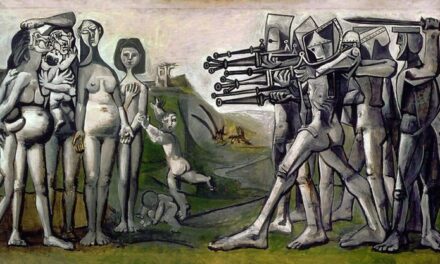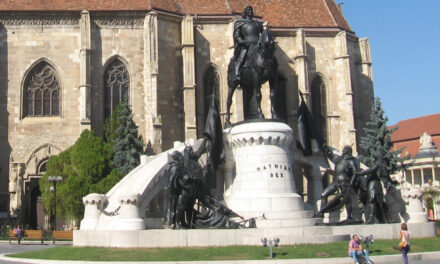The exhibition of the life of Ákos Szabó entitled "A European Hungarian" opened on Saturday in the István Csók Gallery . Painter and graphic artist Ákos Szabó is an outstanding creator of contemporary European and Hungarian fine art. In the István Csók Gallery, more than a hundred works can be seen in three large rooms, encompassing the entire oeuvre of the artist, szekesfehervar.hu reported.
The exhibition, which selects from early works to the main works that form the backbone of his oeuvre, to the most recent works, can be seen in the Csók Gallery until January 31, 2022.
Ákos Szabó, a Hungarian painter and graphic artist living in France, has been under the spell of art for eighty years. He graduated from the Academy of Fine Arts in 1960, his master was Bernáth Aurél. He has been living and creating in Paris since 1965, and in Normandy since 1995. From the 1960s, he became a dominant representative of the supernaturalists, and in the 1970s, he became a virtuoso artist with extraordinary skills in Paris. Since the eighties, biblical themes have been of great importance in his works. He is an outstanding creator of sacred realism. He is an excellent portrait painter, "from the very beginning, I have placed the human face created in the image and likeness of God at the center of my artistic interest," he confesses.
" Science and art cannot be defined at the same time, because they are big things: there is no definition that would exhaust them. However, here is one of their sides: they are the most precious collection chambers of our Consciousness about the world, art is a precious collection of sensations and feelings, science is a collection of concepts that have settled down from it." - quoted Mihály Babits' thoughts at the opening of the exhibition by Tamás Vargha, Székesfehérvár member of parliament, emphasizing that the works of Ákos Szabó, the European Hungarian painter and graphic artist, can be seen again here in Székesfehérvár, in the Csók Gallery, where the painter's works "returned" after the 1964 Winter exhibition. .
In his greeting, mayor András Cser-Palkovics drew attention to the artist's painting Farewell, which the public could see at the Winter Exhibition in Székesfehérvár in 1964: "It is symbolic, exciting and interesting that upstairs, this work greets the visitor in 2021 "almost winter ”, when both the work and the artist returned to Székesfehérvár” The mayor thanked the painter Ákos Szabó, the curator Norbert Tóth, the Szent István Király Museum, as well as the foreign collections that made the works available for the exhibition. Mayor András Cser-Palkovics urged the residents of Fehérvár to see as many as possible the exciting, diverse exhibition on display until the end of January.
"The exhibition convinces us that painting is not over yet..." - emphasized László L. Simon, director general of the Hungarian National Museum, in his celebratory speech. "We tend to think that the era and the world when painting had meaning and essence have ended. We thought this because of many things.. on the one hand, there was a huge fear among Hungarian visual artists and visual artists of the world when photography appeared, then of course we see how photography became an independent field of art and also how the unified art disappeared at the beginning of the 20th century canon in all branches of art," recalled L. Simon László, who said that today's exhibition convinces us that there is indeed a comeback and that not only painting has no end, but neither does figurativism, just as storytelling has not stopped in literature either, because "there will always be new storytellers, new stories, and we will have an elemental desire to know other people's stories and to make our own known to others".
The director general of the Hungarian National Museum also praised Norbert Tóth's curatorial activities: "Norbert Tóth's work is primarily about showing the 20th century. from the art of the second half of the 20th century, which has undeservedly escaped attention.. He is aware that we owe ourselves an immeasurable debt, because the kind of curatorial approach and art historical activity that has dominated European art criticism, exhibition organization and the art trade for many decades does not do a number of things he allowed in and covered this up with the false claim that what is figurative painting in the 20th century. is born in the second half of the 20th century, it is less valuable than what was born in the spirit of non-figurativeness" László L.Simon added that he is not speaking against non-figurativeness, as he is a big fan of many contemporary artists who fill the canvas in a completely different way than Ákos Szabó do.
The full article can be read HERE
Photo: szekesfehervar.hu












